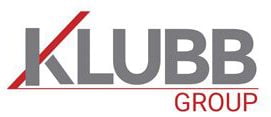The Provision and Use of Work Equipment Regulations, commonly abbreviated as PUWER, set forth responsibilities for individuals and entities who own, operate, or control work equipment. Additionally, these regulations extend duties to businesses and organizations that have employees utilizing work equipment, irrespective of the equipment’s ownership status.
Under PUWER, it’s mandated that equipment designated for workplace utilization must:
- Be apt for the purpose it’s intended for
- Remain safe for use, undergo regular maintenance to preserve its safe condition, and be inspected to confirm its correct installation and to prevent any subsequent degradation
- Be operated solely by individuals who have been adequately informed and trained, and who have received comprehensive instructions
- Be accompanied by suitable health and safety measures, which typically include safeguards like protective devices and control mechanisms. These measures usually encompass guards, emergency stop features, effective energy isolation means, conspicuously visible markers, and alarm systems
- Adhere to particular requirements set for mobile work apparatus and power presses
Moreover, certain work equipment may fall under additional health and safety regulations besides PUWER. For instance, lifting gear must also comply with LOLER (Lifting Operations and Lifting Equipment Regulations), pressure apparatus with the Pressure Systems Safety Regulations, and personal protective gear with the PPE Regulations.
Definition of Work Equipment
Work equipment encompasses any machinery, appliance, apparatus, tool, or installation utilized in the workplace, whether exclusively or not. This definition also covers equipment provided by employees for use at their workplace. The term “use of work equipment” is broadly interpreted to include activities such as starting, stopping, programming, setting up, transporting, repairing, modifying, maintaining, servicing, and cleaning.
Obligations
Entities utilizing work equipment or providing it for others (e.g., for hire a cherry picker) are required to manage associated risks. This involves ensuring:
- The equipment is suitably constructed or modified for its intended use
- Consideration is given to the working conditions and potential health and safety risks when selecting equipment
- Equipment usage aligns with intended purposes
- Regular maintenance to keep equipment in a state of efficiency, in good working order, and in good repair
- Up-to-date maintenance logs, where applicable
- Inspection after installation and prior to use, especially if installation affects safety
- Regular inspections to identify and rectify potential faults due to deterioration, ensuring health and safety risks are managed
- Provision of clear, adequate health and safety information and, where necessary, written usage instructions to all users, supervisors, or managers of work equipment
- Adequate training for all users, including information on safe use, potential risks, and necessary precautions
- Restriction of equipment use to trained and designated individuals, especially for equipment posing specific health and safety risks
When introducing new work equipment at the workplace, it’s imperative to ensure compliance with the essential requirements of applicable product supply laws. This includes ensuring the equipment comes with proper conformity markings, a Declaration of Conformity, instructions in English, and is free from apparent defects.
For mobile work equipment, it’s crucial to ensure suitability for carrying employees, minimize rollover risks, and protect users in case of falls or rollovers through suitable restraints and rollover protection systems. Equipment must be equipped with effective control, braking, and, if necessary, lighting systems, alongside safeguards for power shafts driving accessories.
Power presses used on cold metal require thorough examination and testing of guards and protection devices by a competent person at regular intervals, with meticulous record-keeping of these checks.
The 1998 PUWER regulations, updated by subsequent amendments, are bolstered by an Approved Code of Practice (ACOP) and free guidance from HSE, which provide detailed advice on compliance. While adherence to ACOPs is not legally mandatory, it represents recognized good practice and is often referenced by health and safety inspectors.






